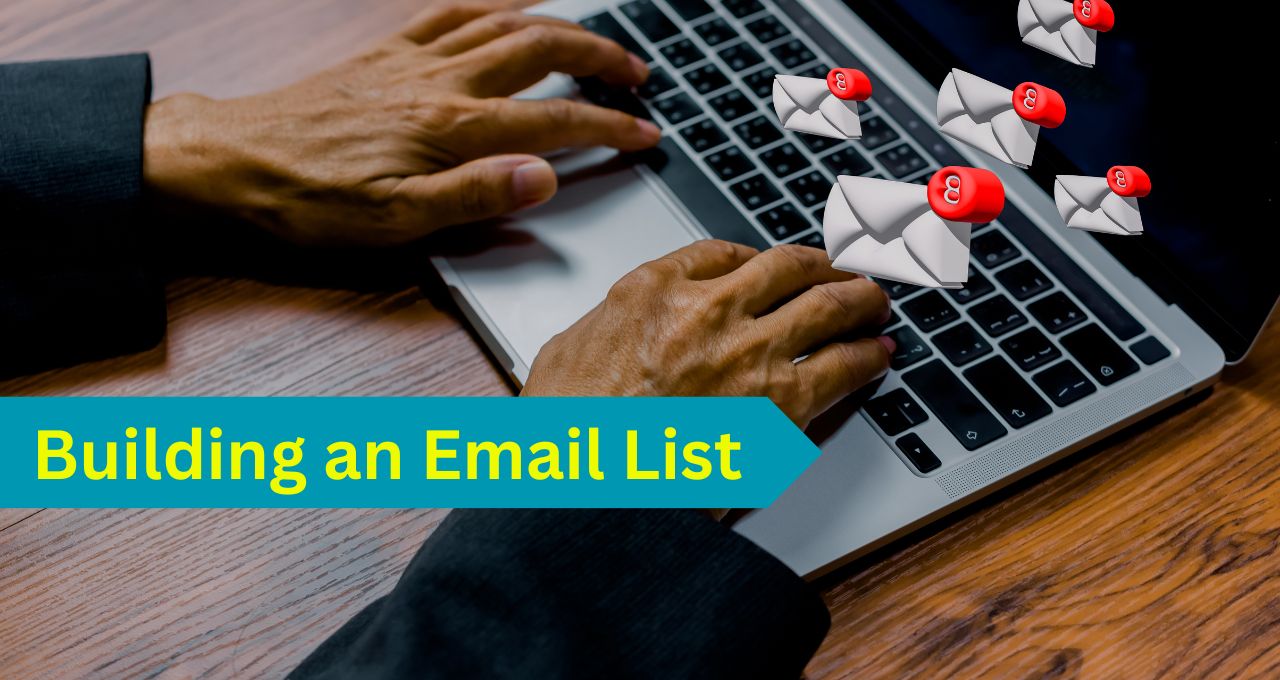While a website can be a valuable asset for any business or individual, it’s not always a prerequisite for building a thriving email list. In today’s digital landscape, there are numerous effective strategies you can leverage to cultivate a strong community of engaged subscribers, even without having a website of your own.

This guide delves into ten proven methods for building your email list without a website:
1. Embrace the Power of Landing Pages:
While you may not have a full-fledged website, landing pages are crucial elements in your email list-building strategy. These single-focused pages provide a dedicated space to capture leads and present your value proposition to potential subscribers.
Several online tools, like Leadpages, Unbounce, and GetForm, offer user-friendly interfaces for creating landing pages without any coding knowledge. Simply choose an appealing template, customize the design with your brand elements, and embed a clear and concise signup form for visitors to submit their email addresses.
2. Offer a Compelling Lead Magnet:
People are more likely to share their valuable email addresses if they perceive an exchange of value. This is where lead magnets come in. These are free resources, such as ebooks, checklists, cheat sheets, webinars, or exclusive discounts, offered in exchange for signing up for your email list.
Tailor your lead magnet to your audience’s specific needs and interests. Research relevant topics, identify their pain points, and create content that addresses their challenges and provides valuable solutions.
3. Leverage Social Media Platforms:
With billions of active users, social media platforms provide a goldmine of potential subscribers. Utilize these platforms to promote your lead magnets and signup forms. Share engaging content, interact with your audience, and encourage them to visit your landing page to learn more and claim their free offer.
Run targeted social media ads to reach a wider audience interested in your niche. Remember to include clear calls to action (CTAs) in your posts, directing viewers to your landing page.
4. Build Your Network Through Personal Contacts:
Don’t underestimate the power of your existing network of friends, family, colleagues, and professional connections. Share your email list signup form with individuals who might be interested in your content or offerings.
However, avoid being overly promotional. Instead, highlight the benefits of subscribing and personalize your approach depending on your relationship with each individual.
5. Partner with Established Businesses and Individuals:
Collaborate with businesses or individuals who share a similar target audience with yours. Consider offering guest posts on relevant blogs, conducting joint webinars, or running co-branded promotions. These collaborations can expose you to a new audience and encourage them to subscribe to your email list for further updates.
6. Implement a Referral Program:
Incentivize your existing subscribers to spread the word about your offerings by implementing a referral program. Reward individuals who refer new subscribers, either with discounts, bonus content, or other tangible benefits. This can significantly boost your subscriber base through organic growth.
7. Contribute Content to Online Communities:
Engage in online communities like forums, discussion boards, and question-and-answer platforms relevant to your niche. Share your expertise by providing valuable insights, answering questions, and establishing yourself as a thought leader.
Include a brief mention of your email list in your profile or signature, subtly encouraging interested individuals to subscribe for further insights and updates.
8. Utilize Guest Posting Opportunities:
Reach a wider audience and showcase your expertise by contributing guest posts to established blogs and publications in your industry. This not only builds your brand awareness but also allows you to include a call to action at the end of your post, directing readers to your landing page to subscribe for more valuable content.
9. Explore the Power of Paid Advertising:
While relying solely on organic methods can be cost-effective, consider exploring paid advertising options on social media platforms, search engines, or content discovery networks. Target your ads to users interested in your niche and include compelling CTAs to drive them to your landing page and ultimately, your email list.
10. Encourage Offline Signups:
Don’t limit your email list-building efforts to the online world. Consider offline methods as well. Collect email addresses at events, conferences, or workshops you attend. Create physical signup forms or utilize QR codes that link directly to your landing page, making it easy for individuals to join your mailing list.
11.Building a Robust Email List Takes Time and Effort:
Remember, building a substantial email list takes consistent effort and dedication. Be patient, experiment with different strategies, and continuously tailor your approach based on what resonates most with your target audience. By providing valuable content, offering incentives, and fostering meaningful connections, you can successfully build a thriving email list, even without a website, and achieve your marketing goals.
12. Segment Your Audience:
As your list grows, consider segmenting your subscribers based on demographics, interests, or engagement levels. This allows you to send targeted emails that cater to the specific needs and preferences of each segment, resulting in a more personalized and impactful communication experience.
13. Prioritize Email Deliverability:
Maintaining good email deliverability is critical. Choose a reputable email marketing service provider (ESP) with high deliverability rates and follow established best practices for sending emails. Avoid spammy tactics, regularly clean your list of inactive subscribers, and ensure your emails comply with anti-spam regulations.
14. Nurture Your Relationship with Subscribers:
Building long-term relationships with your subscribers goes beyond simply adding them to a list. Consistently deliver high-quality content that aligns with their interests and provides value. Respond to their inquiries and feedback, and foster a sense of community and engagement.
15. Track and Analyze Your Results:
Monitor your email marketing efforts to understand what’s working and what needs improvement. Analyze key metrics, such as open rates, click-through rates, and conversion rates, to identify areas for optimization.
16. Embrace Continuous Improvement:
Building an email list is an ongoing process. Stay updated on the latest trends and best practices in email marketing. Continuously experiment, refine your strategies, and adapt to the evolving needs of your audience and the broader marketing landscape.
By implementing these comprehensive strategies and best practices, you can effectively build a strong and engaged email list without a website, laying the foundation for successful marketing campaigns and building lasting connections with your target audience.
